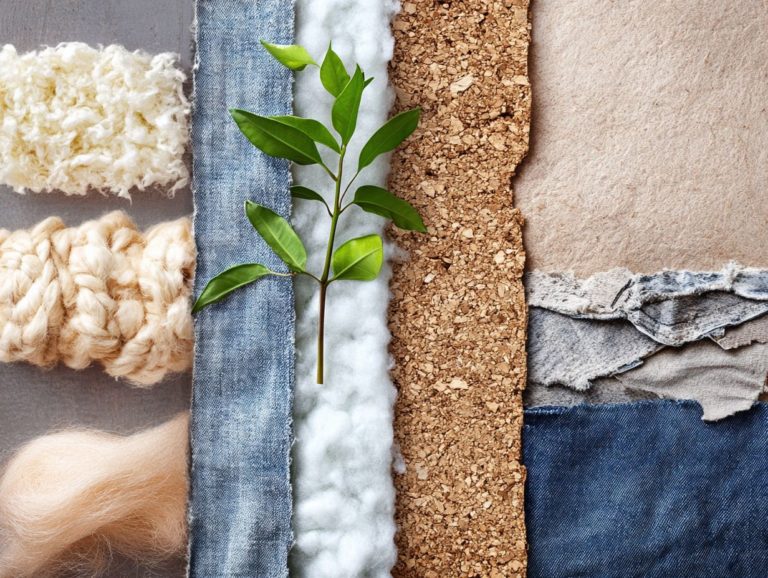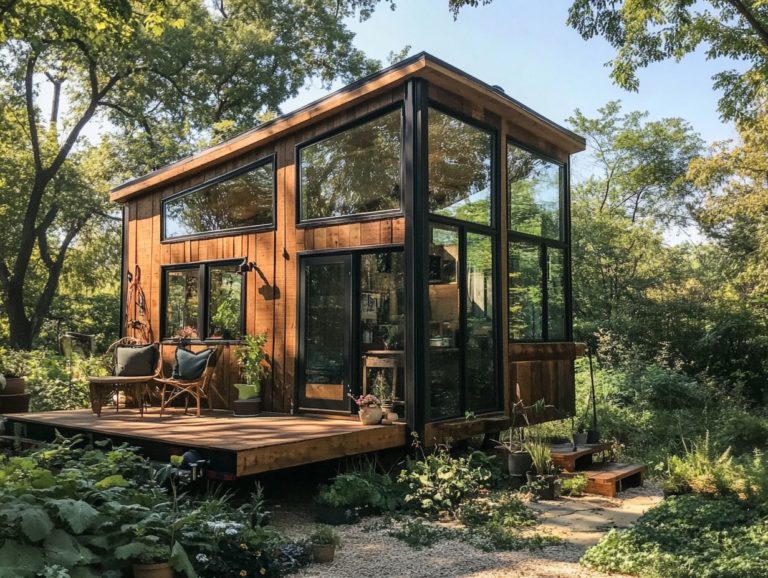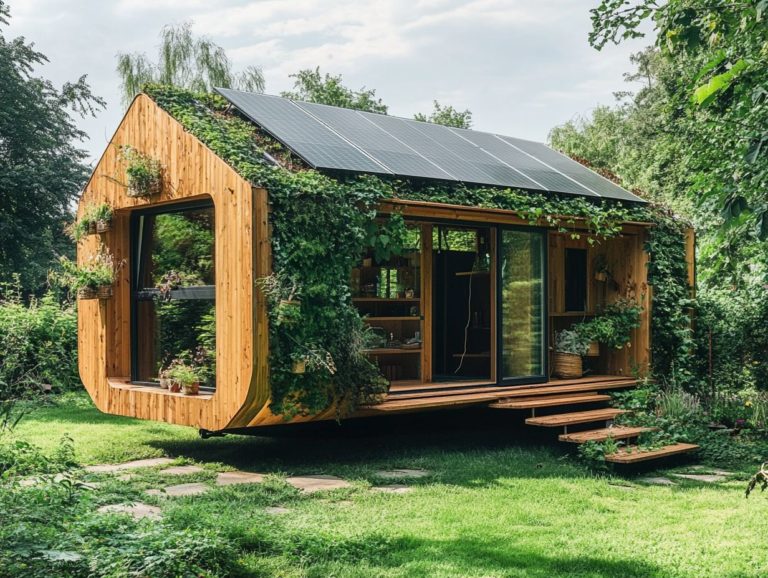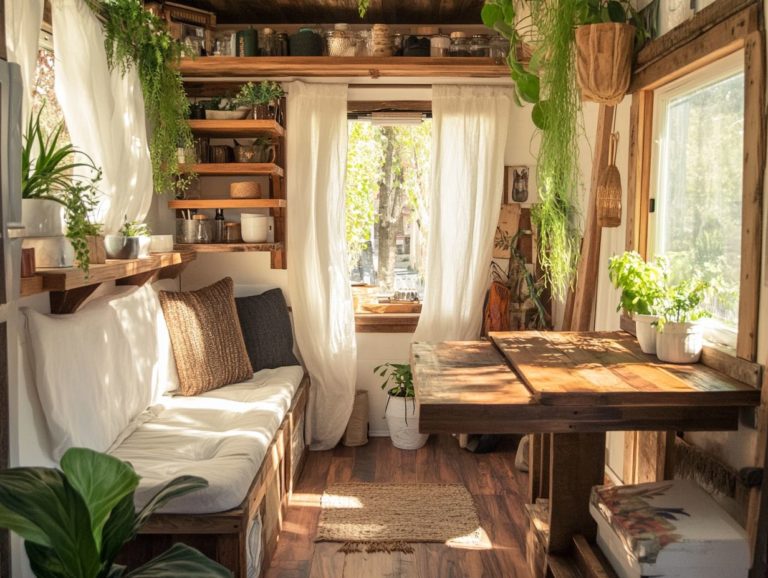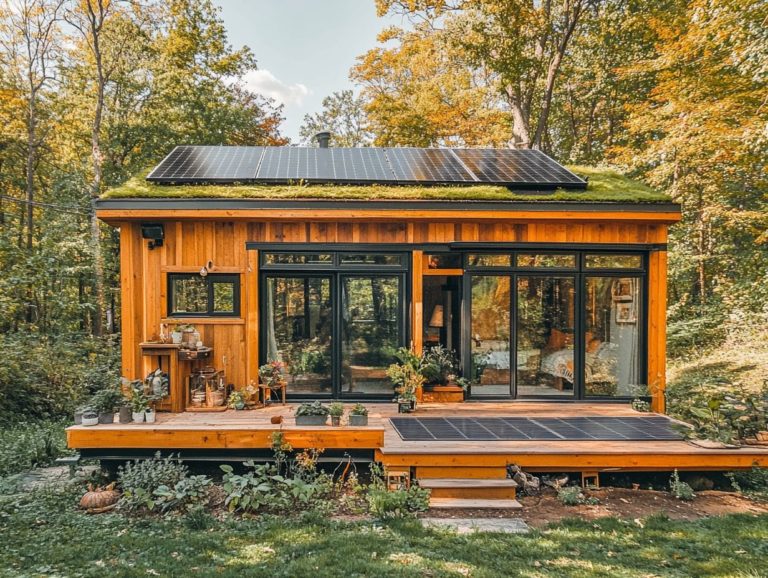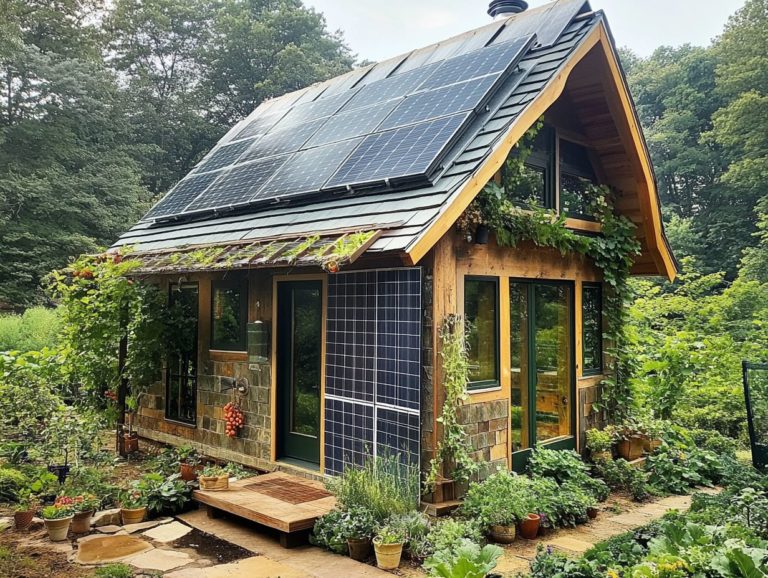Integrating Biophilic Design with Sustainable Materials
In an increasingly urbanized world, biophilic design connects us to nature while improving our living spaces. This design philosophy enhances aesthetics and offers significant benefits for health and sustainability.
Discover how sustainable materials are key to this approach. You’ll find real-life examples and practical strategies for integration, including green roofs and living walls.
Dive into innovative ways to create harmonious spaces that nurture both people and the planet.
Contents [hide]
- Key Takeaways:
- Understanding Biophilic Design
- The Benefits of Biophilic Design
- Integrating Sustainable Materials
- Examples of Biophilic Design with Sustainable Materials
- How to Incorporate Biophilic Design with Sustainable Materials
- Frequently Asked Questions
- 1. What is biophilic design, and how does it relate to sustainable materials?
- 2. How can I integrate biophilic design with sustainable materials in my home?
- 3. What are some benefits of integrating biophilic design with sustainable materials?
- 4. Are there specific sustainable materials commonly used in biophilic design?
- 5. Can biophilic design and sustainable materials be incorporated into commercial spaces as well?
- 6. Is it more expensive to incorporate biophilic design and sustainable materials into a building?
Key Takeaways:
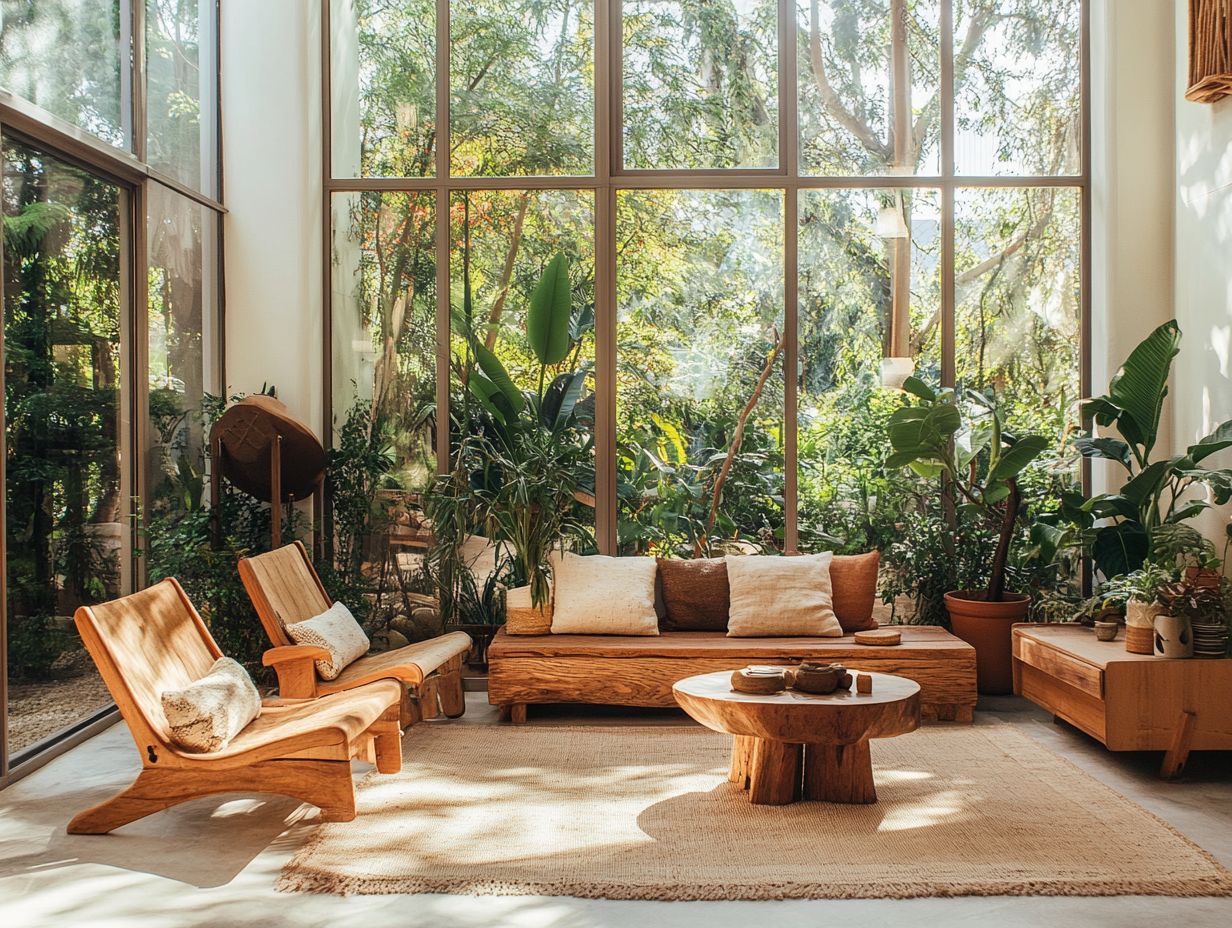
- Biophilic design connects us with nature and boosts both physical and mental health.
- Using sustainable materials makes spaces more environmentally friendly.
- Simple strategies help you incorporate biophilic design, like adding greenery and using natural materials.
Understanding Biophilic Design
Understanding biophilic design is essential in today s architecture. It highlights the deep connection between humans and nature, enhancing well-being and creativity.
This approach considers the environmental impact of urban living. By adding natural elements like indoor plants and outdoor views, you can uplift mental health and boost biodiversity.
Biophilic design is a vital part of modern architecture, emphasizing user experience and sustainability.
What is Biophilic Design?
Biophilic design blends natural elements into our built environments to strengthen our bond with nature. It focuses on creating spaces that enhance health and well-being.
By incorporating elements like natural light and greenery, these designs improve air quality, reduce stress, and foster community interactions.
Biophilic design enriches our sensory experience, allowing us to enjoy a balance between built environments and the beauty of nature.
The Benefits of Biophilic Design
Biophilic design offers more than just visual appeal. It significantly enhances health, boosts productivity, and supports environmental sustainability.
This approach turns spaces into havens that nurture both individuals and the planet.
Improving Health and Well-being
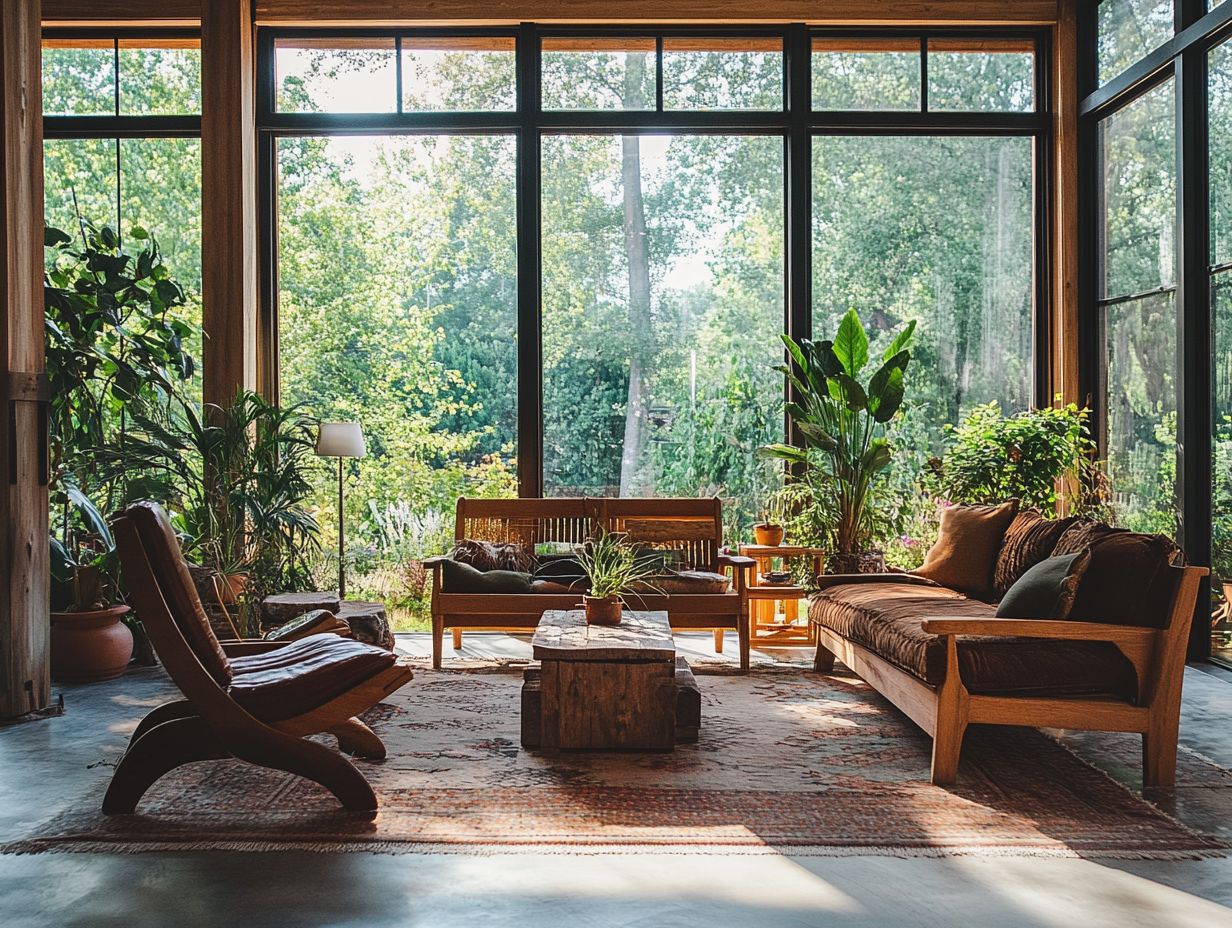
Transform your space today for a healthier future! Biophilic design is essential for enhancing your health and well-being. It seamlessly integrates elements that elevate indoor air quality, invite natural light, and cultivate healing spaces.
Incorporating nature-inspired features such as greenery, water elements, and organic materials can reduce stress and anxiety. In these soothing environments, you’ll notice an increase in concentration and creativity. Natural light lifts your mood and helps regulate your circadian rhythms, which promotes healthier sleep patterns.
Improving indoor air quality through plants and proper ventilation enhances physical health, reducing illness and boosting energy levels. This is crucial for maintaining healthy interiors. Ultimately, these design features create a strong connection to nature, enhancing your emotional resilience and overall satisfaction, whether at home or in the workplace.
Environmental Sustainability
Environmental sustainability lies at the heart of biophilic design. It encourages the use of renewable materials, like bamboo and recycled metals, reducing the ecological footprint of your buildings while simultaneously enhancing biodiversity.
By integrating advanced materials, you minimize waste and promote circularity, which means reusing materials instead of throwing them away. This holistic approach nurtures healthier ecosystems as you strive to create spaces that resonate with nature.
Elements like indoor gardens and living walls improve air quality and support local wildlife, enhancing overall environmental health and contributing to habitat corridors in urban settings.
Choosing sustainable materials sourced from responsibly managed forests ensures that biophilic design elevates aesthetic appeal while playing a crucial role in combating climate change and preserving natural habitats.
Integrating Sustainable Materials
Integrating sustainable materials into your architectural design is essential for elevating energy efficiency, minimizing environmental impact, and fostering a circular economy in modern construction.
By making this choice, you contribute positively to the planet and enhance the overall value and longevity of your projects.
Definition and Importance
Sustainable materials are invaluable resources that fulfill your present needs without jeopardizing the well-being of future generations. They play a crucial role in minimizing environmental impact within architecture.
Consider materials like bamboo, recycled metals, and sustainably harvested timber. These renewable resources have gained traction due to their efficient energy use and lower carbon footprint. Choosing sustainable materials aligns with environmental policies designed to cut waste and pollution while enhancing energy efficiency, which translates into reduced operational costs.
By prioritizing these resources, you can create structures that are not only visually striking but also contribute to a healthier planet and society. This approach fosters a harmonious balance between human needs and ecological preservation, ensuring a sustainable future for all.
Examples of Biophilic Design with Sustainable Materials
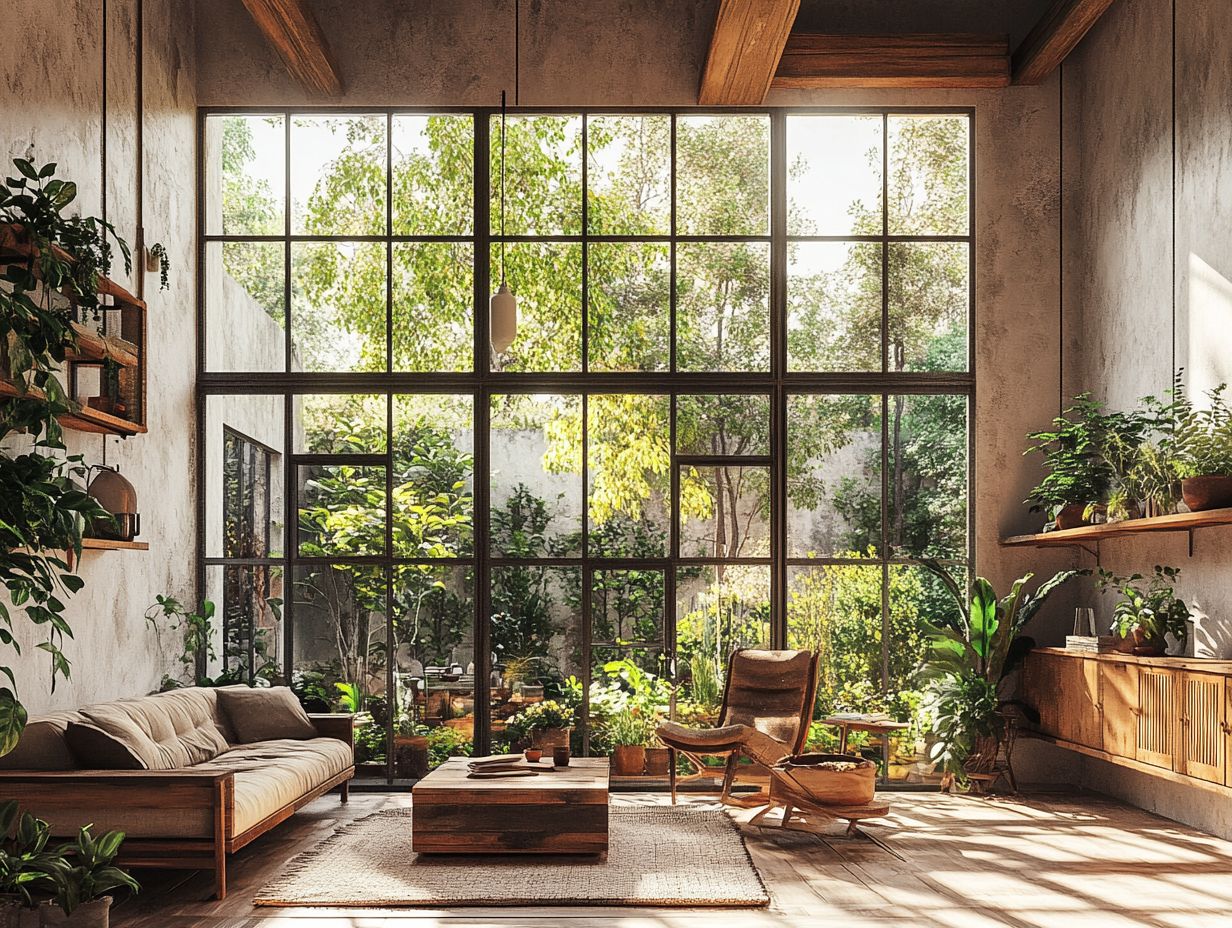
Discover amazing examples of biophilic design coupled with sustainable materials across various case studies. These illustrate the remarkable potential of architecture that honors both nature and human needs.
Start your journey towards a healthier and more sustainable home today!
Case Studies and Real-Life Applications
Case studies of biophilic design show how adding natural elements and sustainable materials can transform urban ecosystems and enhance user experiences.
As you explore various projects, you’ll notice architects and designers prioritizing the well-being of inhabitants alongside environmental sustainability. For instance, a well-documented initiative in Singapore features vertical gardens and living walls that enhance visual appeal while improving air quality and biodiversity.
Similarly, a recent urban redevelopment project in Copenhagen utilized reclaimed materials, creating vibrant public spaces that encourage community interaction and nurture a connection to nature.
These examples highlight the significant impact of biophilic design. By intentionally integrating ecological elements, we not only beautify spaces but also cultivate healthier, more resilient environments, enhancing the overall wellness of building occupants.
How to Incorporate Biophilic Design with Sustainable Materials
Incorporating biophilic design with sustainable materials requires thoughtful strategies that elevate user experience and foster healthy environments. This approach enhances the aesthetic appeal of spaces and promotes well-being and connection to nature, creating inviting atmospheres.
Practical Tips and Strategies
Here are practical tips for incorporating biophilic design:
- Use sustainable materials.
- Optimize natural light.
- Create spaces that encourage interactions between humans and nature.
By integrating biophilic elements like living green walls or natural wood finishes, you can create a welcoming atmosphere that promotes relaxation and enhances overall well-being. Strategically placing windows maximizes daylight, reduces reliance on artificial lighting, lowers energy costs, and boosts mood and productivity essential for healthy interiors.
Adding water features or natural textures invites sensory experiences that reconnect you with nature. These thoughtful choices elevate the aesthetic quality of your space while enhancing the mental and emotional health of its occupants, fostering a harmonious balance between the built environment and nature.
Frequently Asked Questions
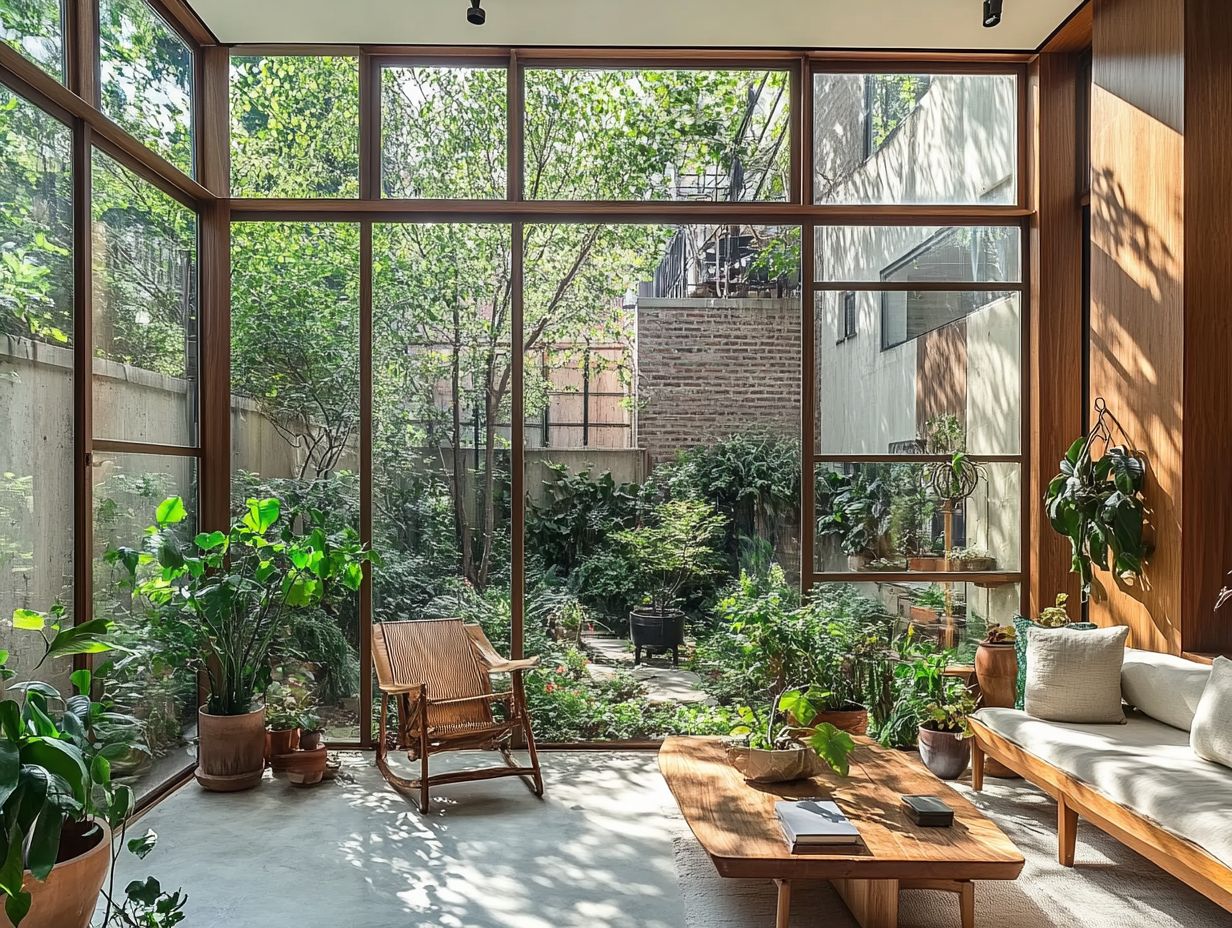
1. What is biophilic design, and how does it relate to sustainable materials?
Biophilic design connects built environments to nature by incorporating natural elements. It uses sustainable materials to reduce environmental impact.
2. How can I integrate biophilic design with sustainable materials in my home?
You can easily add biophilic design to your home by using natural, renewable materials like bamboo or cork for flooring and incorporating plenty of plants and natural light.
3. What are some benefits of integrating biophilic design with sustainable materials?
Integrating biophilic design with sustainable materials improves air quality, reduces energy consumption, and fosters a greater connection to nature, promoting mental and physical well-being.
4. Are there specific sustainable materials commonly used in biophilic design?
Yes! Common materials in biophilic design include reclaimed wood, recycled glass, and natural stone. These have a low environmental impact and add a unique touch to any space.
5. Can biophilic design and sustainable materials be incorporated into commercial spaces as well?
Absolutely! Biophilic design and sustainable materials can be integrated into commercial buildings, enhancing employee productivity and customer satisfaction.
Transform your space today with these simple biophilic design principles!
6. Is it more expensive to incorporate biophilic design and sustainable materials into a building?
Some initial costs may arise from sourcing eco-friendly materials and creating spaces that connect people with nature.
However, these investments can lead to significant long-term savings by reducing energy use and enhancing the well-being of occupants.

